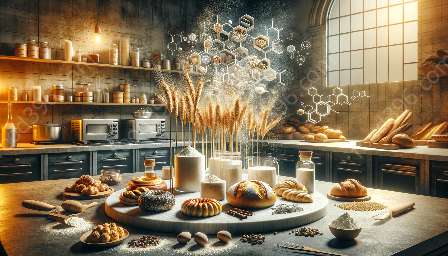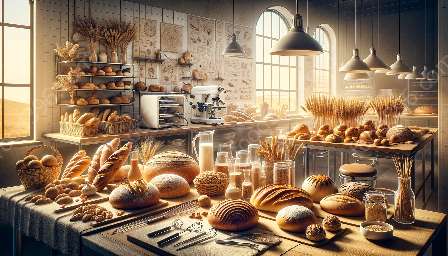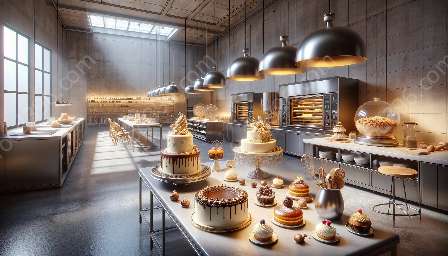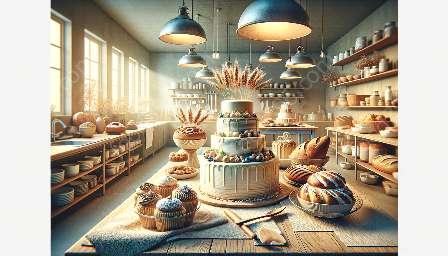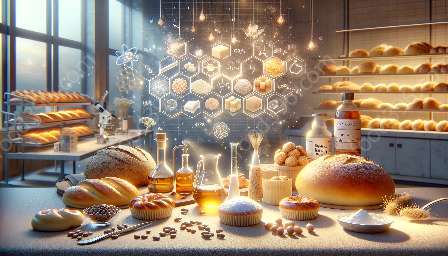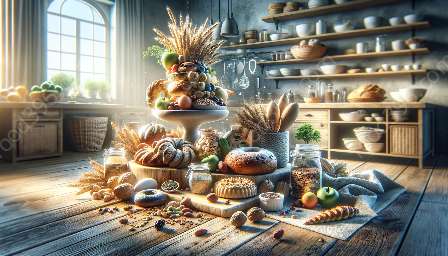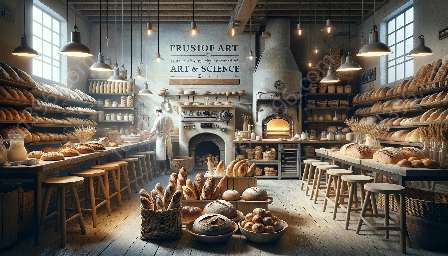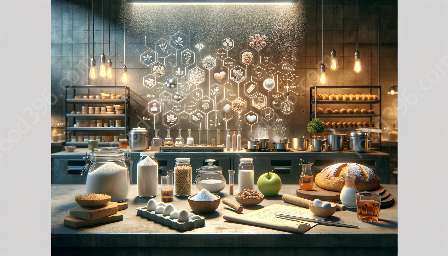Whether you're a passionate home baker or a professional pastry chef, the power of chocolate and cocoa in baking is undeniable. The rich, decadent flavors and luxurious textures they impart to a wide variety of baked goods have made them essential ingredients in countless recipes.
From brownies and cakes to cookies and pastries, chocolate and cocoa play a vital role in creating beloved treats that bring joy and satisfaction to those who indulge in them. But what exactly makes chocolate and cocoa such integral components of successful baking? To uncover the secrets behind these beloved ingredients, we need to explore the intricate relationship between baking science, technology, and the art of creating delicious food and drink.
The Science of Chocolate and Cocoa
Before diving into the role of chocolate and cocoa in baking, it's essential to understand their composition and how they interact with other ingredients during the baking process. Both chocolate and cocoa come from the cacao bean, which is packed with compounds that contribute to their unique properties. One of the key components of cacao is cocoa butter, which gives chocolate its smooth, melt-in-your-mouth texture.
Additionally, cacao contains flavonoids, which are potent antioxidants known for their health benefits. These compounds not only add depth to the flavor of chocolate but also contribute to its appeal as a luxurious ingredient in baking. When cocoa powder is used in baking, it's typically processed to varying degrees to create different types of chocolate, such as unsweetened, bittersweet, and semisweet, each of which offers distinct flavors and properties.
The Role of Chocolate and Cocoa in Baking Science
When it comes to baking, chocolate and cocoa serve multiple purposes, each of which is informed by the principles of baking science and technology.
- Flavor Enhancement: Chocolate and cocoa bring rich, complex flavors to baked goods, elevating them from ordinary treats to indulgent delights. The bitterness of cocoa powder can balance out the sweetness in a recipe, while the creamy sweetness of chocolate adds depth and character to everything from cakes to cookies.
- Texture Improvement: The fat content in chocolate, primarily from cocoa butter, contributes to the moistness and tenderness of baked goods. Chocolate's ability to melt during baking disperses fat throughout the batter, leading to a more luscious and velvety texture in the finished product.
- Chemical Reactions: Chocolate contains compounds that undergo chemical changes during the baking process, such as melting and solidifying, which affect the outcome of the baked goods. Understanding these reactions is crucial for achieving the desired texture and appearance of the final product.
- Emulsification: The fat in chocolate acts as an emulsifier, helping to blend water-based and fat-based ingredients together, resulting in a smooth, homogenous batter or dough.
The Technology of Working with Chocolate and Cocoa
Effective utilization of chocolate and cocoa in baking relies on the mastery of specific techniques that harness the technology behind these ingredients. From tempering chocolate to understanding the intricacies of cocoa processing, baking professionals and enthusiasts must be well-versed in the technical aspects of working with these beloved components.
Tempering Chocolate:
Tempering chocolate is a crucial technique that involves melting, cooling, and reheating chocolate to ensure a glossy finish and a satisfying snap when it sets. Temperatures and precise methods are essential in this process to achieve the desired crystalline structure in the chocolate, which gives it stability and a pleasing texture.
Cocoa Processing:
The processing of cocoa beans is a complex industrial process that affects the flavor, color, and texture of the final cocoa powder and chocolate products. Understanding the different methods of cocoa processing, including fermentation, drying, roasting, and grinding, is essential for selecting the right type of cocoa for a specific baking application.
Chocolate and Cocoa Innovations:
Advancements in food and drink technology have led to innovations in chocolate and cocoa production, resulting in a wide array of options for bakers. From specialty chocolates with unique flavor profiles to cocoa powders with varying degrees of intensity, staying abreast of the latest advancements in chocolate and cocoa technology can greatly enhance the quality and creativity of baked goods.
Challenges and Innovations in Chocolate and Cocoa Baking
While chocolate and cocoa are beloved ingredients in baking, they also present specific challenges that require innovative solutions. These challenges, often rooted in the scientific and technological properties of chocolate and cocoa, demand a nuanced understanding of baking principles and the ability to overcome obstacles to achieve exceptional results.
Melting and Setting:
Understanding the melting points and re-solidification properties of different types of chocolate is essential for creating smooth, shiny coatings, velvety ganaches, and delicate chocolate decorations. Precise control of temperature and timing is critical in achieving the ideal consistency in chocolate-based creations.
Precise Measurements:
Recipes involving chocolate and cocoa often require precise measurements to ensure the correct balance of flavors and textures. Bakers must be meticulous in weighing and portioning these ingredients, as minor deviations can significantly impact the final outcome of the baked goods.
Health Considerations:
Given the growing focus on health and wellness, the use of chocolate and cocoa in baking has spurred innovation in the development of healthier alternatives, including low-sugar chocolates, dairy-free options, and cocoa products with enhanced nutritional benefits. Bakers must stay informed about these advancements to create baked goods that cater to evolving consumer preferences.
Exploring the Intersection of Chocolate, Cocoa, and Baking
The harmonious relationship between chocolate, cocoa, and baking extends beyond the technical aspects of utilizing these ingredients. It encompasses the artistry of creating visually stunning and delectable treats that captivate the senses and evoke feelings of delight and indulgence. By understanding the interplay between the science, technology, and artistry of baking with chocolate and cocoa, bakers can unleash their creativity and craft unforgettable culinary experiences.
Artistic Expression:
Chocolate and cocoa provide bakers with a canvas for artistic expression, allowing them to sculpt, temper, and adorn their creations with intricate designs and decorations. From elaborate chocolate sculptures to delicate cocoa powder dustings, these ingredients elevate baking into an art form that delights both the eyes and the palate.
Flavor Pairing and Fusion:
Experimenting with the diverse flavor profiles of chocolate and cocoa opens up endless possibilities for creating innovative and unforgettable baked goods. By pairing chocolate and cocoa with complementary ingredients, bakers can infuse their creations with layers of flavor, from spicy chili-infused chocolate to tangy citrus and cocoa combinations, expanding the horizons of traditional baking.
Cultural and Historical Significance:
Chocolate and cocoa possess a rich cultural and historical heritage that transcends their role as ingredients in baking. Understanding the origins and significance of these ingredients adds depth to the baking process, allowing bakers to honor and celebrate the traditions and stories woven into the fabric of chocolate and cocoa production.
Conclusion
Diving into the realm of chocolate and cocoa in baking unveils a world of scientific, technological, and artistic possibilities. By mastering the intricate balance of flavors, textures, and techniques, bakers can unlock the full potential of these cherished ingredients and create baked goods that enchant and inspire. The marriage of baking science and technology with the artistry of chocolate and cocoa results in a cornucopia of delectable treats that elevate the culinary experience to new heights. Embrace the magic of chocolate and cocoa in baking, and let your creations delight and captivate all who partake in them.

